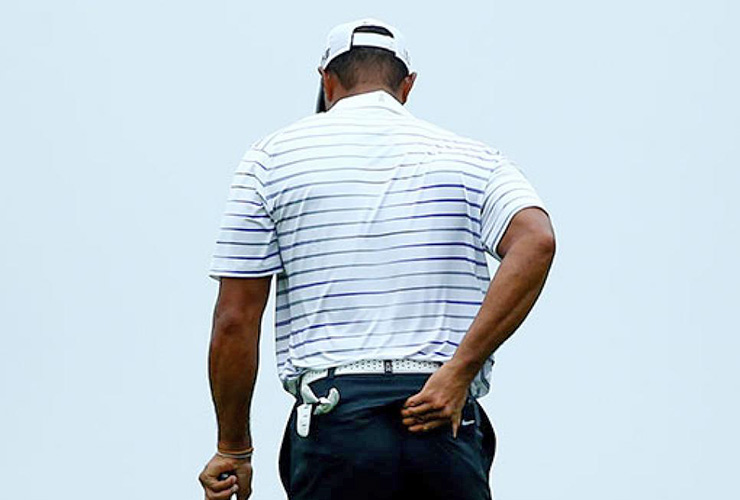Photo By: Andy Lyons
Tiger Woods’ car crash in Los Angeles on Tuesday, in which his agent said he suffered multiple leg injuries, is the latest in a series of ailments he’s suffered during his career. Here’s a look at everything Tiger has been through, big and small.
[divider] [/divider]
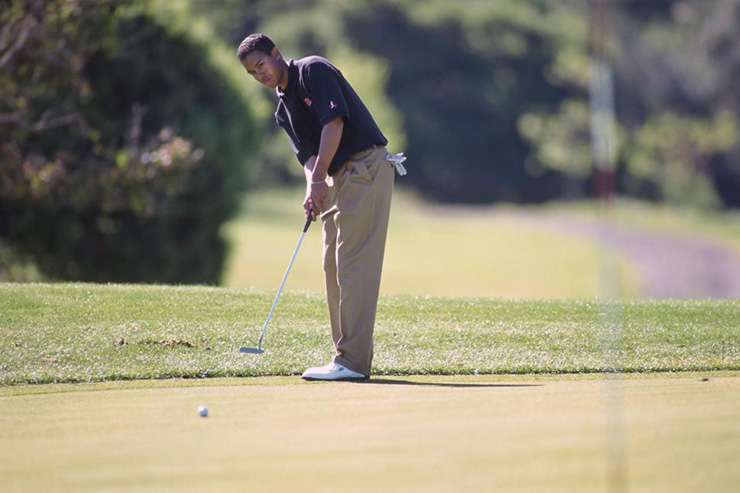
Photo By: David Madison
1995: College troubles
Fresh off his first semester at Stanford, Tiger Woods had surgery in December 1994 to remove scar tissue and two tumours from his left knee. Short-term damage: The surgery was mostly a preventative measure and it happened in the offseason, so not much. Long-term damage: Also not much. Woods rebounded by finishing T-41 in his first Masters, defended his U.S. Amateur title, and we didn’t hear about the left knee again until 2002.
[divider] [/divider]
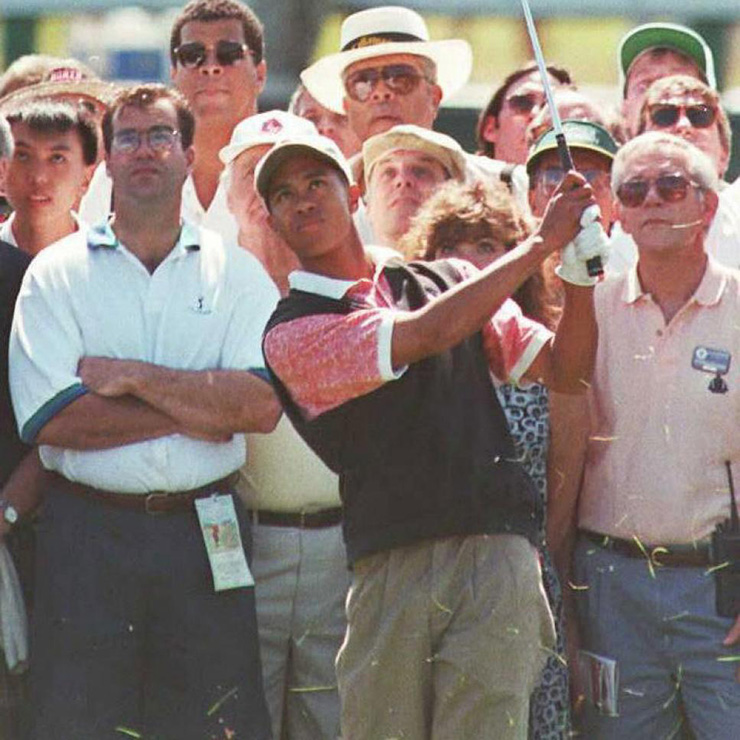
Photo By: HENNY ABRAMS
1995: A major WD
The 1995 U.S. Open was the first encounter with U.S. Open rough for the scrawny, 20-year-old Tiger. After trying briefly to play through pain, he withdrew on the sixth hole at Shinnecock Hills in the second round after shooting a 74 in the first. Short-term damage: The pain of having to withdraw from your first U.S. Open was surely heartbreaking. Long-term damage: Didn’t hear much from his left wrist after this, and it didn’t seem to hinder his budding career.
[divider] [/divider]
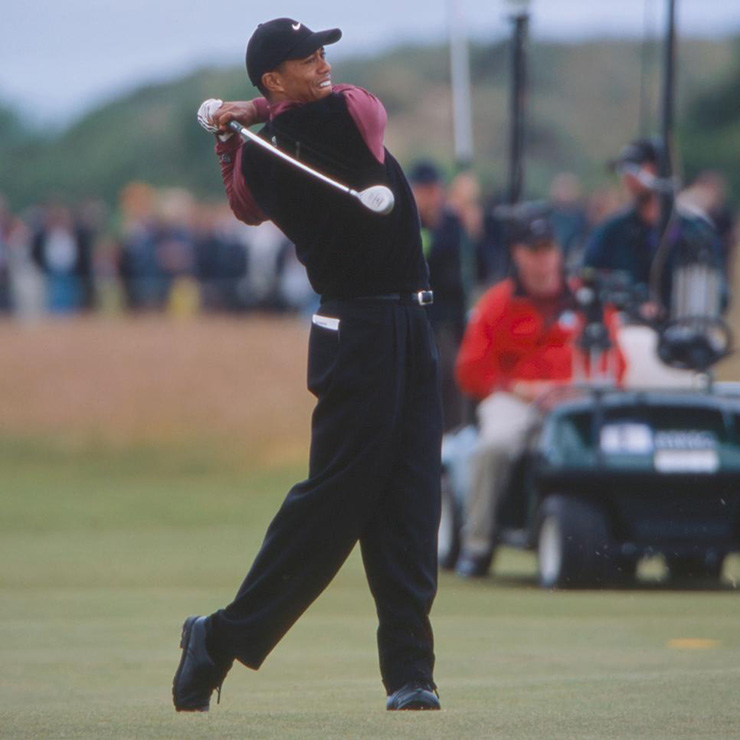
Photo By: R&A Championships
2002: Injury-proofing the swing
Seven years to the month from Tiger’s first left knee surgery, he underwent a second procedure to drain fluid around his left ACL and remove several cysts. Short-term damage: Not having the option to play the first five events of the season is tough, but Tiger probably would have only played two of them, anyway. Long-term damage: This was the start of recurring left-knee issues, which forced him to overhaul his swing to make it less injury-prone. It also resulted in a two-year major-less slump.
[divider] [/divider]
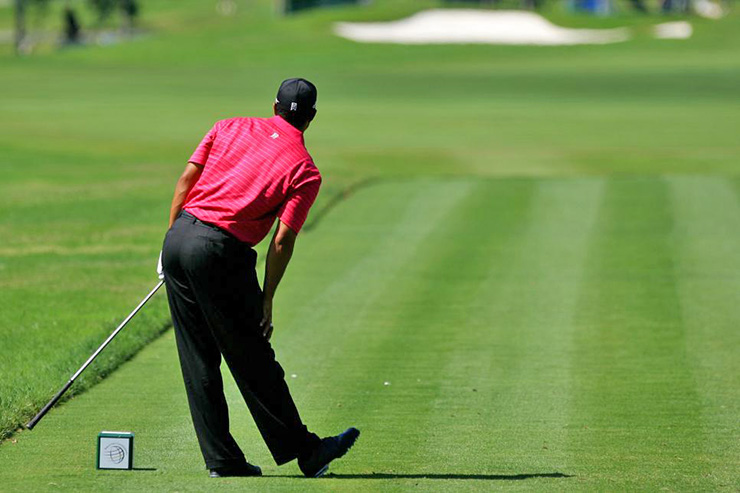
Photo By: David Cannon
2007: Running kills (or at least hurts a lot)
Tiger ruptured his ACL in August while running on a golf course and plays the rest of the season through sporadic bouts of pain. Short-term damage: Some pain, but he still finished first, first, T-2, first and first in his next five events, including a victory at the 2007 PGA. Long-term damage: This remained a nagging injury for months and eventually forced him into surgery.
[divider] [/divider]
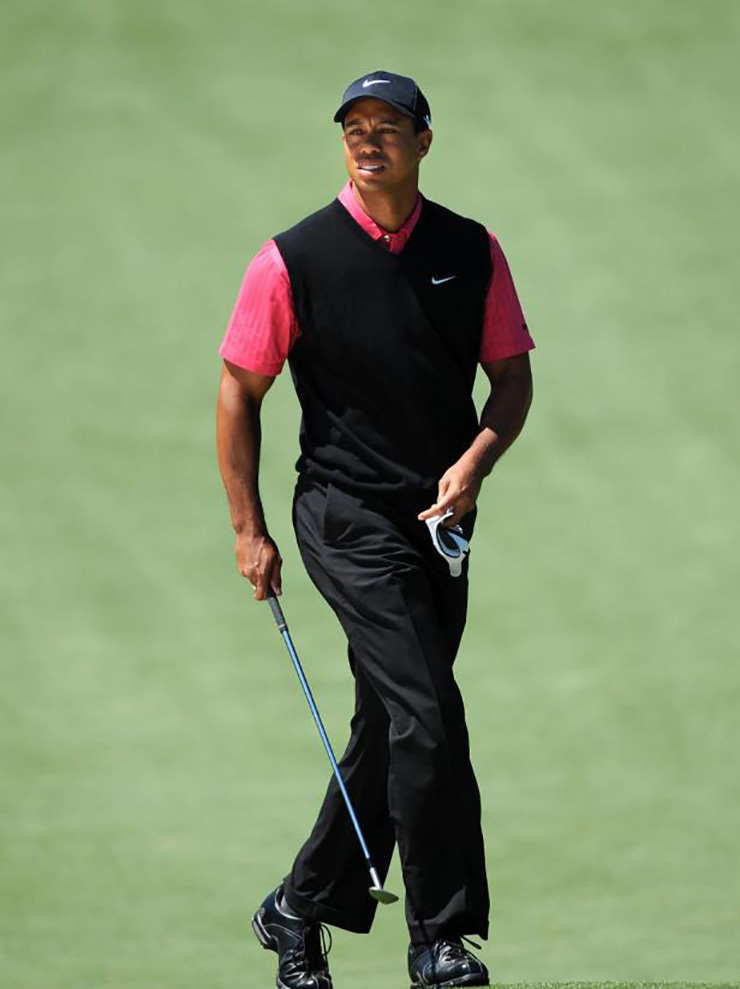
Photo By: TIM SLOAN
April 2008: Big decision
With lingering pain in his left knee from his injury eight months prior, Tiger Woods decided to undergo surgery after the Masters. Short-term damage: Surgery forced him to miss the Memorial and the Players, surely the last thing he wanted to do after three wins and a second in his first five events. Long-term damage: He opted not to repair his ligaments so he could compete in the remaining three majors. Playing on it brought him a historic victory at the U.S. Open, but cost him the final two majors anyway.
[divider] [/divider]
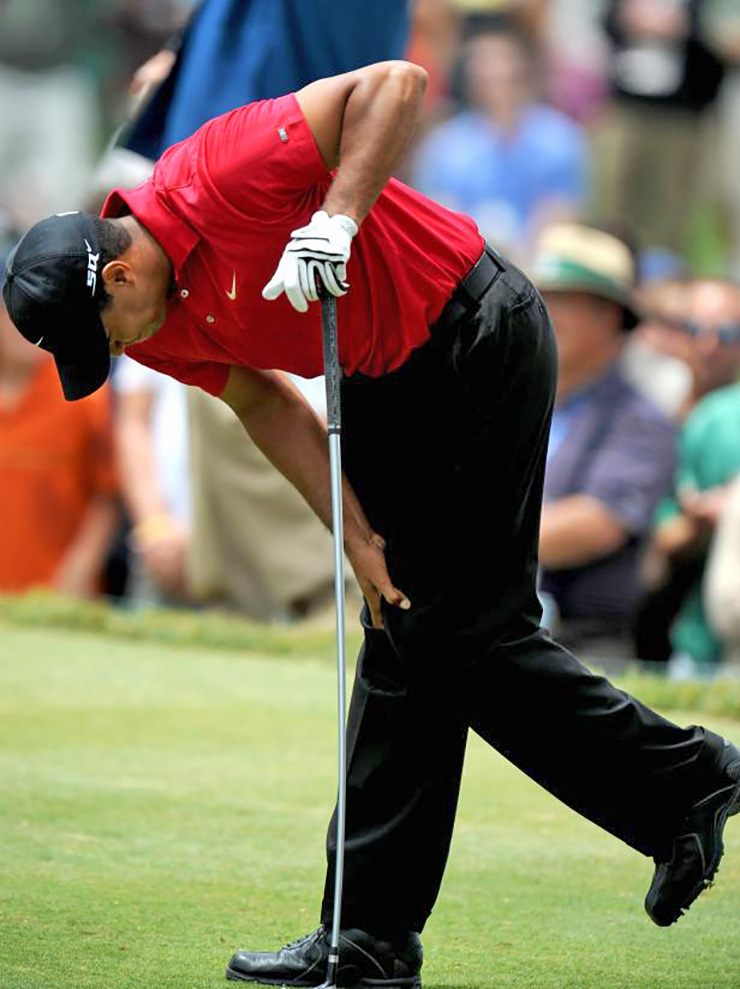
Photo By: ROBYN BECK
June 2008: One-legged Tiger
With continuing ligament damage in his left knee, doctors told the World No. 1 a month earlier that he also has two stress fractures in his left tibia and advised him to go on crutches for three weeks. He did not, however, follow their advice the week of the U.S. Open at Torrey Pines, and proceeded to win his 14th major title in a dramatic playoff over Rocco Mediate. Short-term damage: Ignoring his doctors was a bold move, but at least he got a U.S. Open trophy out of it—91 painful holes later. Long-term damage: Reconstructive surgery eight days after the Open forced him to miss the rest of the season and likely delayed his recovery.
[divider] [/divider]

Photo By: John M. Heller
December 2008: Offseason woes
Woods injures his right Achilles while running during the offseason as he was working to return for the 2009 season. Short-term damage: It was during the offseason, but it did limit his practice time during his hiatus from competition. Long-term damage: We only heard about it once since this flair-up, and it was two years later.
[divider] [/divider]
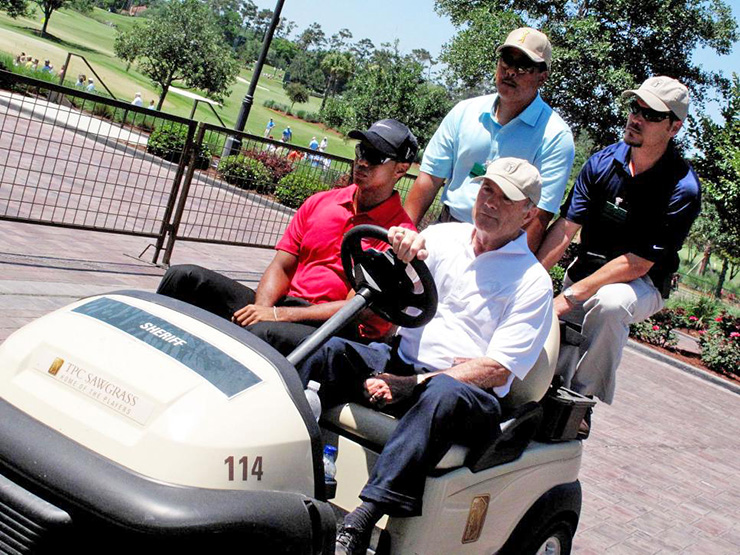
Photo By: Scott Halleran
May 2010: Another WD
Having been quietly playing through pain throughout the week, Tiger finally withdrew from the Players almost halfway through his final round after experiencing tingling down his right side. Short-term damage: It wasn’t a bulging disc in his back like he had feared, but it was obviously bad enough to force Tiger to withdraw from one of the year’s biggest events. Long-term damage: He finished T-19 at the Memorial and T-4 at the U.S. Open in his next two starts, but future back issues cannot be totally separated from this initial back problem.
[divider] [/divider]

Photo By: Drew Hallowell
December 2010: Return of the right Achilles
Tiger opts for a cortisone shot to combat “lingering soreness.” This was the only time we heard about Tiger’s right Achilles since he first injured it in 2008. Short-term damage: Playing through some discomfort, Tiger loses in a playoff to Graeme McDowell in the Chevron World Challenge. Long-term damage: Outwardly at least, not much. This was the last we heard of it.
[divider] [/divider]
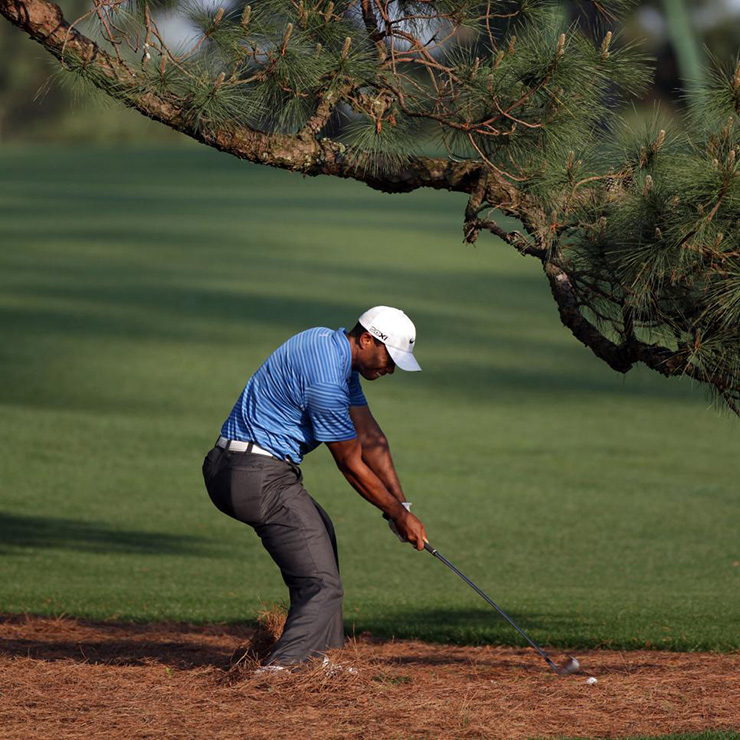
Photo By: Ross Kinnaird
April 2011: Eisenhower’s Achilles
The minor sprain to his left Achilles was caused by his shot from the pine straw under the Eisenhower Tree on the 17th hole at Augusta National. Short-term damage: The injury happened with only 19 holes left to play at the Masters. He went on to shoot a final-round 67, which lifted him into a tie for fourth place but with a fully healthy Achilles, who knows how low he could have gone. Long-term damage: The strain, though minor, kept him out for the Wells Fargo Championship after the Masters, and was another factor in his already troublesome left leg.
[divider] [/divider]

Photo By: Caryn Levy/PGA TOUR/Getty Images
May 2011: Chain reaction
It all went wrong for Tiger at the 2011 Players: His Achilles injury from the Masters acted up, followed by flaring of his lingering knee injury combining with pain in his left calf. Short-term damage: He played poorly and was forced into an early withdrawal after shooting a 42 on the front nine—his second consecutive WD from the Players in two years. Long-term damage: The injury, eventually diagnosed as an MCL sprain in his knee and his Achilles, forced Tiger to miss the U.S. Open for the first time since 1994, and the Open Championship for the second time in four years.
[divider] [/divider]
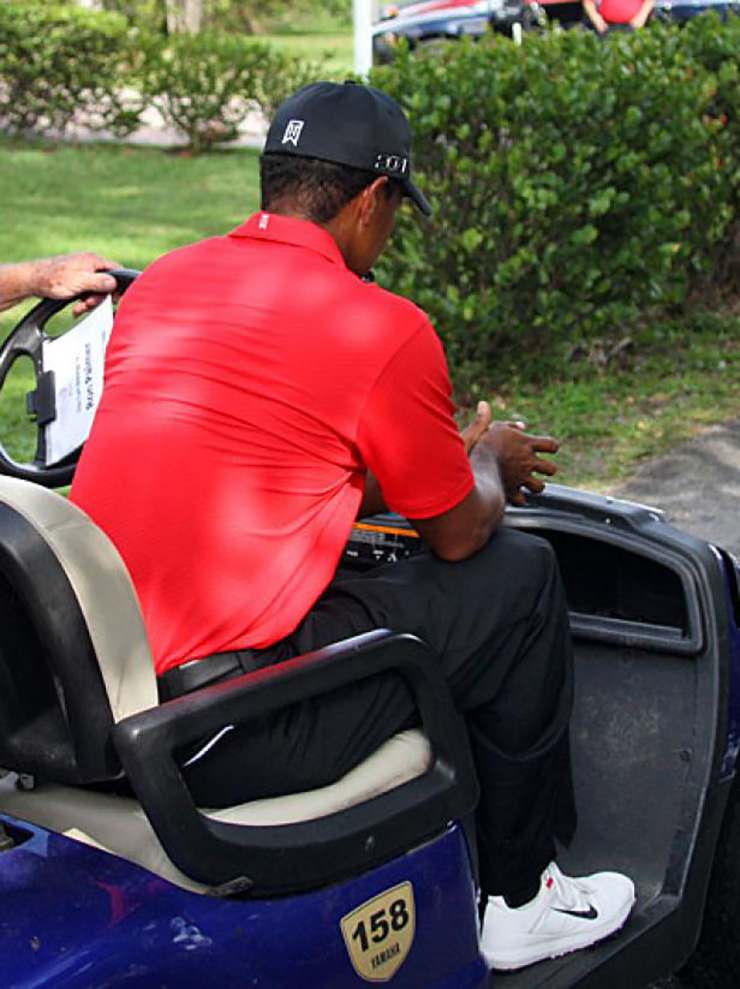
Photo By: Wilfredo Lee/AP Photo
March 2012: Quick recovery
Citing pain in his left Achilles, Tiger was carted off the course following a bad tee shot on the 12th hole of his final round at the WGC at Doral. Short-term damage: Tiger tees it up nine days later at the Tavistock Cup, then wins at Bay Hill five days after that. It begs the question: Could Tiger really not have made it through six more holes? Long-term damage: More so to his reputation than to his Achilles, as some began questioning the severity of his injuries.
[divider] [/divider]
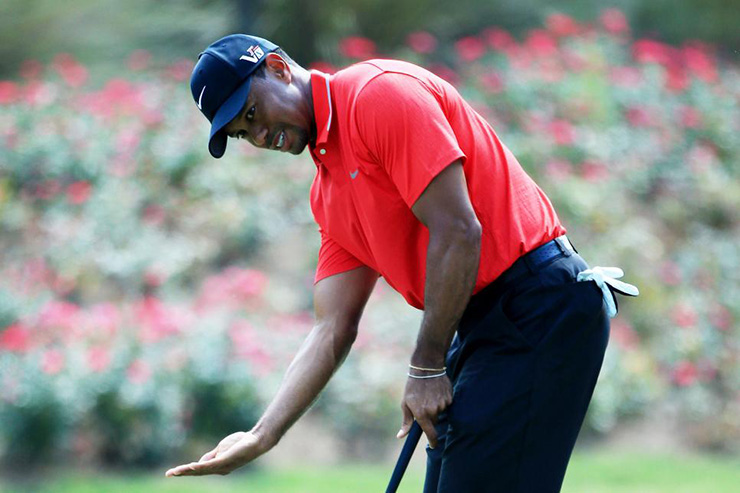
Photo By: Richard Heathcote
May 2013: An exaggerated elbow?
Despite no one noticing any signs of a left elbow injury at the Players, where he said it started, Tiger attributed his poor showings at the Memorial and the U.S. Open to elbow pain, which was aggravated further by the heavy U.S. Open rough at Merion Golf Club. Short-term damage: Tiger decided to skip his own PGA Tour event in Washington, D.C. because of the injury. Long-term damage: He won the WGC-Bridgestone Invitational nearly two months after the U.S. Open without any signs of pain, which stoked some criticism that he was exaggerating his injuries.
[divider] [/divider]
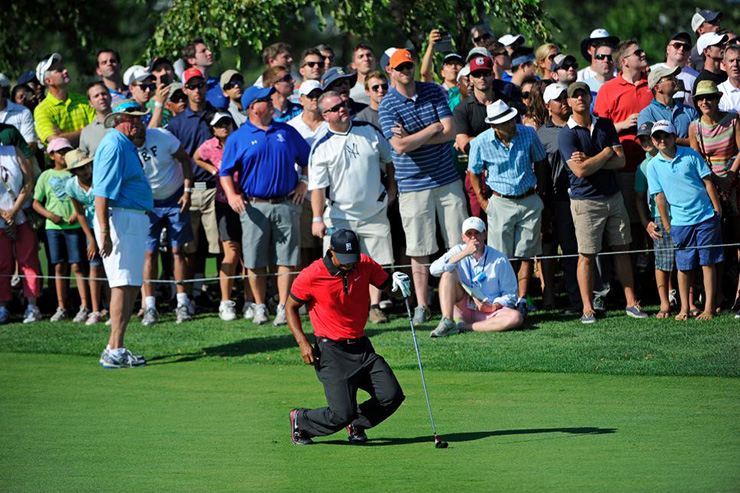
Photo By: Chris Condon
August 2013: Mattress injury
Apparently stemming from a too-soft hotel bed, Tiger only played nine holes of his pro-am because of a stiff neck and went to the ground on the 13th hole of The Barclays on Sunday from what he said was back pain. Short-term damage: This injury probably cost him the tournament. He finished T-2, one stroke behind Adam Scott. Long-term damage: He was forced to pull out of friend Notah Begay’s charity event, but played in the three remaining FedEx Cup Playoff events and the Presidents Cup.
[divider] [/divider]
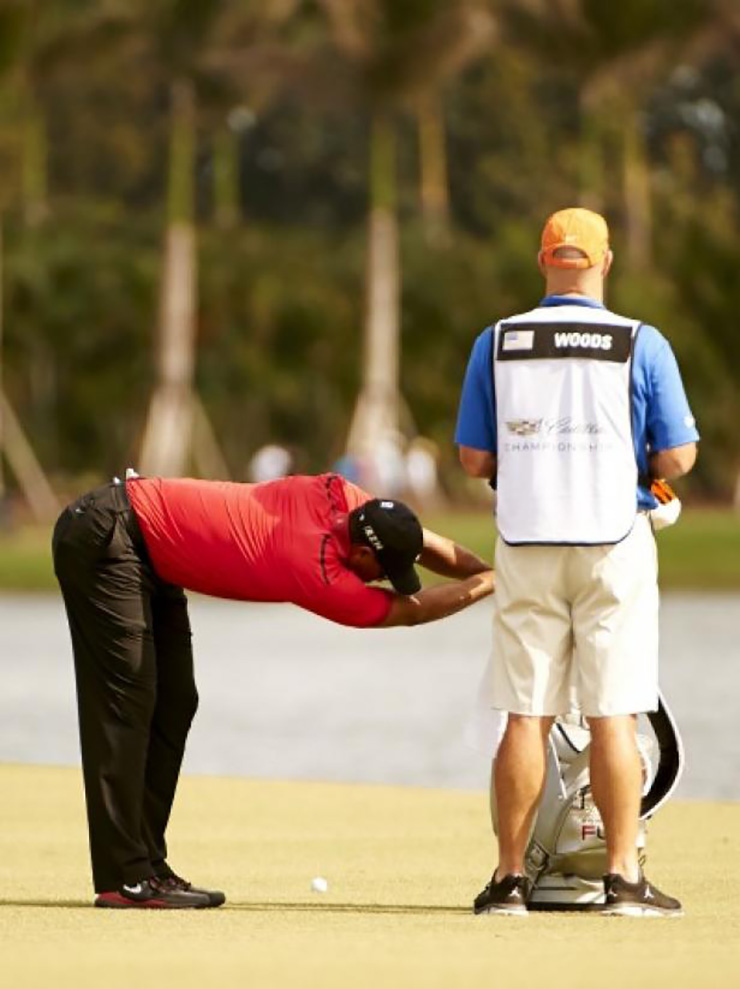
Photo By: Fred Vuich/Sports Illustrated
March 2014: Back surgery
After a fairly successful Presidents Cup, Tiger Woods’ 2014 season seemed to end before it started when his back issues returned. Short-term damage: The injury ushered Tiger to his worst-ever start to a PGA Tour season. He withdrew from the Honda Classic on the 67th hole citing the injury, was in visible pain throughout the WGC-Cadillac the following week (shooting a final-round 78) and skipped Bay Hill, an event where he was the two-time defending champion and had previously won eight times, in March. Long-term damage: He delayed making an official announcement until a week before the 2014 Masters, but on April 1, Tiger announced back surgery would force him to skip the year’s first major for the first time since 1994. Woods returned ahead of schedule at the Quicken Loans National in July and missed the cut by four shots.
[divider] [/divider]

Photo By: Fred Vuich/Sports Illustrated
August 2014: Re-injures Back
In his third tournament back since back surgery, Woods re-injures his back on a shot from an awkward stance on the second hole at Firestone during the final round of the WGC-Bridgestone Invitational. Short-term damage: Aside from his WD at the WGC-Bridgestone, relatively little. He played in the PGA Championship pain-free the next week. Long-term damage: It still remains to be seen to some extent, but considering his back was the cause for his withdrawal at the Farmers Insurance Open six months later, it doesn’t look as though this injury will ever completely go away.
[divider] [/divider]

Photo By: Getty Images
February 2015: Back again
After a disappointing, but pain-free, missed cut at the Waste Management Phoenix Open a week earlier, Tiger tweaked his back after a fog delay earlier in the day disrupted his routine at Torrey Pines and withdrew on his 12th hole. Short-term damage: The withdrawal torches his plans to properly prepare for the Masters and generates a wave of public scrutiny that is the last thing he needs. Long-term damage: Best-case reading? It was a precautionary WD caused by a random and unexpected fog delay. Worst case? It was confirmation that the Tiger who dominated for years has disappeared.
[divider] [/divider]
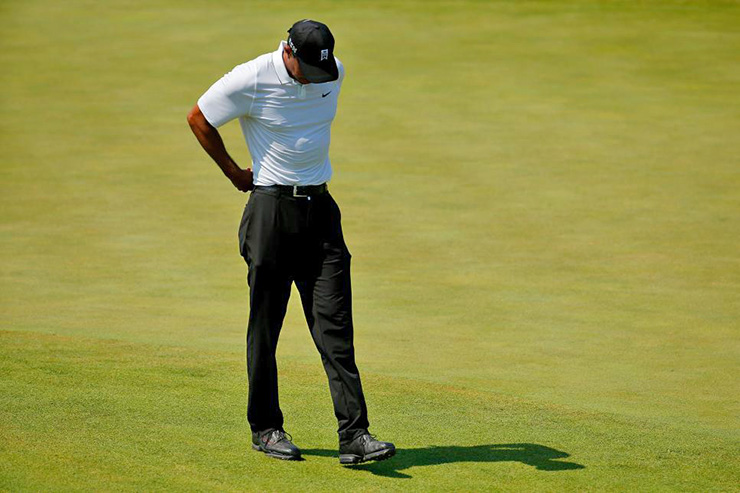
Photo By: Getty Images
2015: Back to back
After seemingly being injury-free for most of 2015, Woods announces on Sept. 18 that he had a second microdiscectomy two days earlier. “With the upcoming offseason, the decision was made to remove a small disc fragment that was pinching his nerve,” neurosurgeon Dr. Charles Rich said. In October he has another procedure to “relieve discomfort.” Short-term damage: Woods will miss the rest of his 2015 schedule. Long-term damage: Initial concerns that recovery from the latest back surgery would extend into the 2016 major season turn out to be underestimating the extent of the injury as Woods is forced to sit out the entire official 2016 as well.
[divider] [/divider]
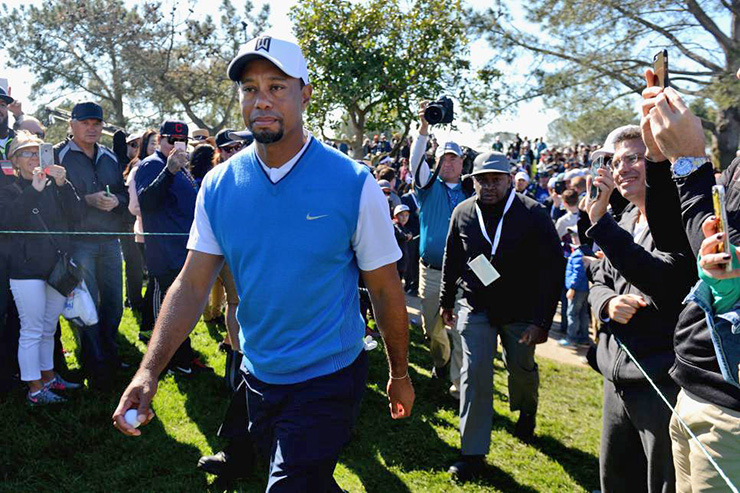
Photo By: Donald Miralle
2017: Fusion surgery
Tiger made an encouraging return to competition at his Hero World Challenge the previous December, playing all four rounds and shooting a second-round 65. But the euphoria of a possible return was dampened after a missed cut at the Farmers Insurance Open, followed by weeks of delay, another missed Masters and then an announcement that he had undergone a fourth back surgery, this one a spinal fusion to alleviate pain in his back and leg. Short-term damage: Woods would be out again for another season, and that was actually the good news. Over Memorial Day weekend, Tiger was arrested for DUI in Florida, with painkillers and sleep drugs found in his system. Sceptical fans have little reason to think this “Hail Mary” procedure will bring Tiger back to the course when he says after being asked by a reporter at the 2017 Presidents Cup if he could envision a scenario in which he would not return to competition with “Yeah, definitely.” Long-term damage: Shortly after his Presidents Cup confession, Woods posts video of him on the course, beginning his slow return to golf. The rehab process goes surprisingly well, as Woods plays again at the Hero World Challenge in December 2017, then competes in 18 events during 2018, capping the year with a victory at the Tour Championship, the 80th of his PGA Tour career.
[divider] [/divider]
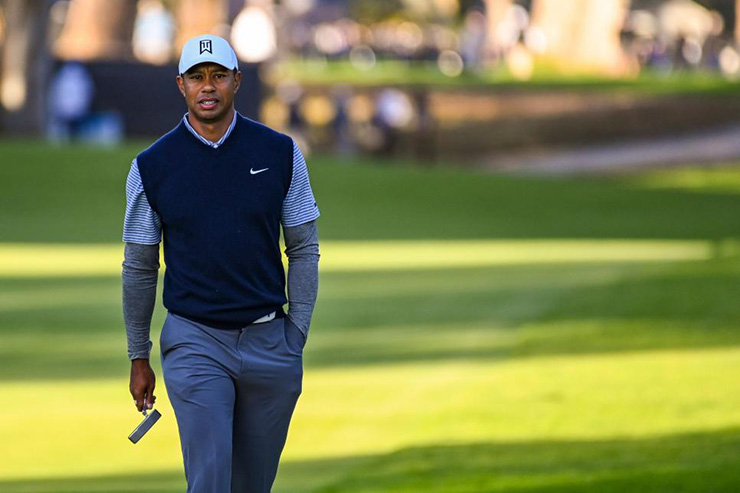
Photo By: Keyur Khamar
March 2019: Not again
For the first time since his 2018 return, Woods’ health is a concern again, as he withdraws from the Arnold Palmer Invitational in March, citing a neck strain. Short-term damage: Woods insists it was strictly a precautionary measure, but you’ll forgive Tiger fans freaking out a little upon hearing the news. Long-term damage: The real freaking out will come in April, when Tiger claims his long sought after 15th major title nearly 11 years after grabbing No. 14, with a victory at the Masters.
[divider] [/divider]

Photo By: Jared C. Tilton/Getty Images
August 2019: Playoff problems
After his Masters win, Woods’ body never truly looks like it wants to cooperate in adding to Tiger’s comeback story. He plays in just one other regular PGA Tour event during the year (Memorial) along with disappointing showings in the remaining three majors. Then at the Northern Trust, the first FedEx Cup Playoff event, Woods withdraws ahead of the second round, citing a mild oblique strain. Short-term damage: The WD means Woods needs a high finish at the BMW Championship just to qualify for the Tour Championship. But will he play? The answer is yes, but a T-37 means that he doesn’t have a chance to defend his title at East Lake. Long-term damage: Presumably the mild strain will eventually heal, and by not qualifying for the Tour Championship, it opens up room on Tiger’s calendar for …
[divider] [/divider]
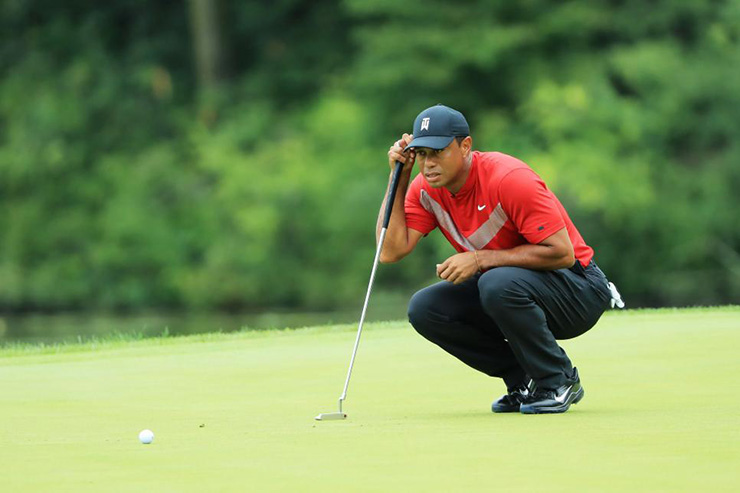
Photo By: Sam Greenwood/Getty Images
August 2019: Knee surgery No. 5
Tiger has announced via social media that during Tour Championship week he underwent arthroscopic surgery on his left knee to repair minor cartilage damage. Short-term damage: Woods wasn’t scheduled to play again until late October at the PGA Tour’s ZOZO Championship in Japan, so he has time to rest and rehab. Long-term damage: Tiger spends the next few months rehabbing, then in his first start back he goes out and wins the inaugural ZOZO event, tying Sam Snead’s record for all-time PGA Tour wins at 82. Come December, he plays even more impressive, going 3-0 as the playing captain for the victorious U.S. Presidents Cup team at Royal Melbourne in Australia.
[divider] [/divider]
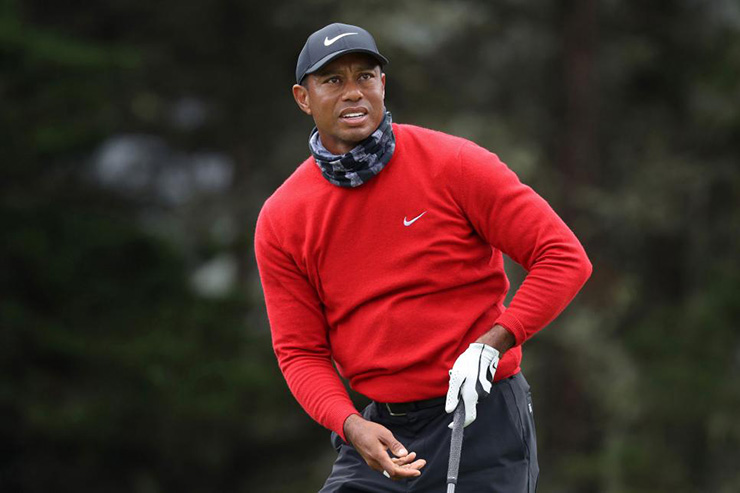
Photo By: Jamie Squire
January 2021: Back surgery No. 5
The 2020 season saw Tiger frequently lament not knowing how good or bad his back would feel on any given day. He struggled to practice and play at full strength, competing in just nine tour events and skipping a number of tournaments he’d normally compete in during the spring, including the Players Championship. Experiencing discomfort after playing in the PNC Championship with his son Charlie in December, Woods decided to have another microdiscectomy procedure to remove a pressurized disc fragment that was pinching a nerve. Short-term damage: Tiger stated in a press release that doctors felt the procedure was a success, and sources close to him say the timeline is such that he hopes to be able to compete ahead of the Masters and be able to play at Augusta National in April. Long-term damage: The need for yet another back procedure likely means that Tiger’s already limited schedule will remain that way for 2021 and beyond.
[divider] [/divider]
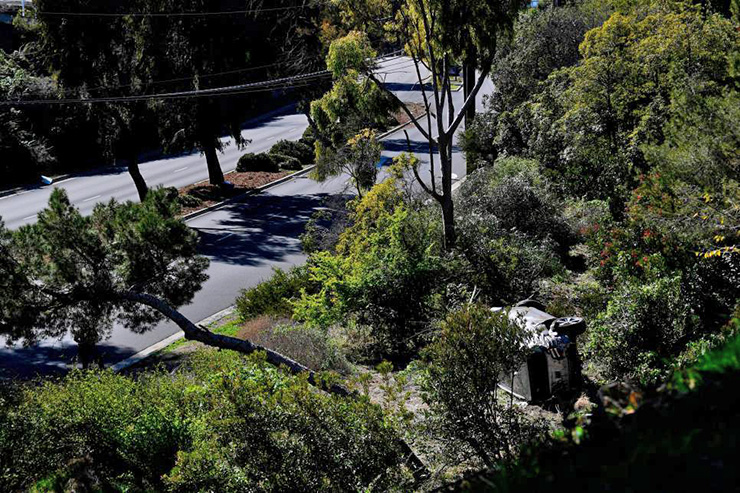
Photo By: PATRICK T. FALLON
February 2021: Car accident
Still recovering from his latest back surgery, and unclear when he might return to competition, Woods was involved in a single-car roll-over crash outside Los Angeles on Feb. 23, in which authorities said that Tiger was lucky to survive. Short-term damage: According to his agent, Mark Steinberg, Woods suffered “multiple” leg injuries but did not specify what they were. Long-term damage: Until the extent of the injuries are known, it’s difficult to say what is in Woods’ future. But the visuals of the damage car don’t leave a lot of room for optimism.
RELATED: The latest on Tiger Woods’ accident

